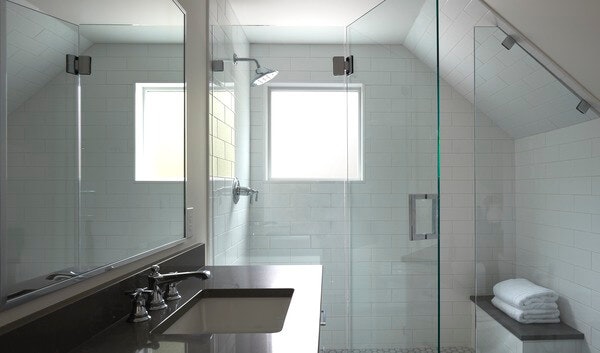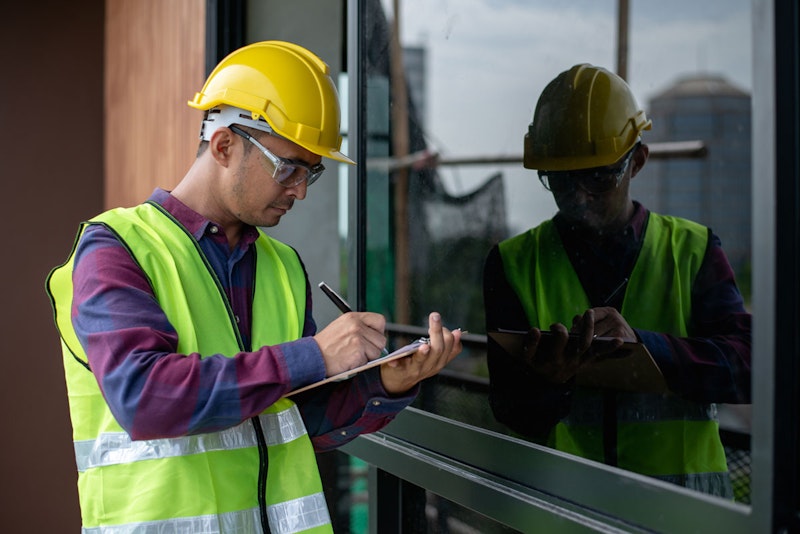
Safety Glass: Tempered Glass Windows and Laminated Glass Windows
Chances are you’ve heard the term ‘tempered glass’ at some point. If you're considering replacement windows or building a new home, you probably have some questions concerning this topic. Is tempered glass the same as safety glass? When and what kind of windows need to have tempered glass? Do my current windows meet specifications?
In this post, we'll examine what tempered glass is, how it's made and used, and answer some common questions including what the requirements are for its use in windows for North Texas homes.
Use the links below to skip ahead:
What is safety glass?
Laminated glass and tempered glass are the two types of safety glass that are made.
Before we specifically look at the characteristics of tempered glass, we need to address the broader topic of safety glass. Safety glass has two important characteristics that make it different from regular glass.
- It is specifically designed to be stronger than normal glass and it is also flame resistant.
- Due to the way safety glass is manufactured, it is stronger than normal glass. If safety glass does break, it is designed to shatter or split into small shards to prevent together and be less prone to inflicting bodily injury by splitting into smaller shards.
What is tempered glass?
Tempered glass is a piece of annealed (ordinary) glass that gets its safety properties from a heating and cooling procedure called “tempering”. The process involves heating the glass and cooling it immediately.
Quickly cooling the incredibly hot glass causes the outside of the glass to harden quicker than the center. This process leaves the center in tension making the glass significantly stronger and more durable than ordinary glass.
This manufacturing process does not alter the properties of normal annealed glass and it retains its color, stiffness, and other characteristics.
How is tempered glass made?
The glazing process for tempered glass begins with a preparation stage that includes cutting the glass to the desired size and examining the glass for imperfections. Next, the glass is put through a heat treatment in which the glass is heated to 600 degrees Celsius.
The heating treatment is followed by “quenching”, a high-pressure cooling procedure in which the glass is cooled in seconds. The quenching cools the outer surface of the glass more quickly than the center leaving the center in tension and the outer surface in compression, this is what gives tempered glass its strength.
The added endurance caused by the differential heating means the glass can be stretched or pulled to a certain limit without breaking.
Photo: Kenan Reed (Unsplash)
How is tempered glass used?
Like laminated glass, tempered glass is intended for use in areas where the glass can pose a risk to friends and family. If you're looking to know where tempered glass is required please consult your local remodeling pro.
Also, like laminated glass tempered glass is found in vehicles. While laminated glass is used in the windshield, tempered glass is required for use in car rear windows and passenger seat windows.
Tempered glass is also found in skylights, refrigerator shelves, oven doors, storm doors, shower doors, and bathroom areas.
What is laminated glass?
Laminated glass is also a type of safety glass. It serves the same purpose of tempered glass, with the main difference between the two is that laminated glass will stay in one piece.
Laminated glass has an extra layer of plastic in between both panes of glass, so that is' extra fortified. Laminated glass has additional benefits that we will go over throughout this article.
How is laminated glass made?
Laminated glass is made of two pieces of regular or tempered glass sandwiched around a layer of clear plastic film (PVB). The set of glass is treated through a process intended to expel air pockets and then it is heated for an initial round of melting.
After this, the glass is heated under pressure to create a finished bound product. Laminated glass can be made stronger by adding layers making the end product thicker.
The plastic layer of the film does give the glass a stretchable quality but don’t imagine the glass stretching like a rubber band. The laminated glass has just enough give and stick in it to hold the glass in place if it were to break.
How is laminated glass used?
Laminated glass is made to be able to withstand high-intensity impacts, while still staying intact. The main benefit of laminated glass is that it will not shatter like regular glass windows.
Laminated glass stays in its frame because it remains attached to the plastic layer in the center. It is most commonly used in automobile windshields and stays structurally intact in accidents, protecting motorists from getting cut on sharp shards of glass
In addition to being found in vehicles, laminated glass is also commonly used for the windows of tall buildings, skylights, balconies, and frameless glass railings.
Why do you need safety glass?
Building codes did not address safety glass concerns until the 1960s. Around this time hospitals were seeing thousands of patients each year for glass-related incidents. Some of these injuries occurred in falls against glass shower door enclosures and glass patio doors.
With injuries and lawsuits on the rise, the National Safety Commission organized a task force to reduce the number of glass-related injuries and deaths.
Any doors made of glass — sliding, French, or shower doors — are always made of tempered glass.
**Consult your local building guides to confirm these parameters.
When is tempered glass required in DFW?
According to the Residential Building Codes for Dallas↗, safety glass must be used in all doors (using either laminated or tempered glass). Additionally, safety glass is required in the following circumstances:
- Glass that is within eighteen inches of the doors vertical edges when the door is in a closed position.
- Windows that are within eighteen inches of a walking surface and in cases where a piece of glass is over nine square feet of unobstructed glass.
- Within 60 inches of a bathtub or shower drain or "in the vicinity of" a pool area including all shower doors and tub enclosures.
Outside of DFW
Ordinances will vary based on where you live. However, according to the National Glass Association, there are four criteria that require safety glass. These guidelines are the basis for local building codes.
- The glazing (glass) is less than 18 inches above the floor
- The top of the glass is less than 36 inches above the floor
- The size of the glass exceeds 9 square feet
- The glass is within 36 inches of where people walk
Any doors made of glass — sliding, French, or shower doors — are all always made of tempered glass.
FAQs about tempered glass
Is tempered glass bulletproof?
No. Bulletproof glass is much more advanced, although glass tempering is one component of the process used to manufacture it.
What causes tempered glass to break?
Tempered glass can be broken in many of the same ways ordinary glass is broken, especially if the tempered glass is defective.
Spontaneous or delayed breakage is also characteristic of tempered glass. This means that if the glass is impacted at a pressure point the glass may not release (break) immediately and there might be a delay before the damaged glass finally breaks. In some circumstances, the glass may appear to break randomly and for no reason.
Is tempered glass considered safety glass?
Yes, absolutely. The manufacturing process for tempered glass makes it 4-5 times stronger than ordinary (annealed) glass. This process also makes the glass less dangerous in cases of breakage.
Organizations began working to improve safety standards around glass in the 1960s because hospitals were treating thousands of glass-related accidents. Safety glazing standards resulted in fewer broken windows and doors and less severe laceration injuries and deaths.
Is tempered glass bulletproof?
No. Tempered glass is not bulletproof, however, it is a component of bulletproof glass.
Does tempered glass shatter?
Not exactly, although tempered glass can break it does not shatter. Unlike ordinary glass (annealed glass), which shatters into sharp shards when broken, tempered glass is designed to break into smaller pieces.
Sometimes they don't disengage and instead interlock with neighboring pieces. If the pieces interlock and don't fall this is OK because you can see that the glass needs to be taken down immediately and replaced. If the glass interlocks and falls in clumps it can be dangerous because the edges are jagged and abrasive.
Oops!
We don't currently serve your area but do want to help you plan your project. Try our Build & Price tool to get an idea of window & door costs within DFW. Your area may be higher or lower but at least you'll have some idea of the price.
Thanks for stopping by.









